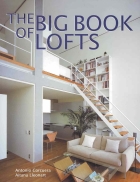




Mã tài liệu: 203330
Số trang: 381
Định dạng: pdf
Dung lượng file: 36,379 Kb
Chuyên mục: Khoa học công nghệ
Những tài liệu gần giống với tài liệu bạn đang xem
📎 Số trang: 441
👁 Lượt xem: 591
⬇ Lượt tải: 16
📎 Số trang: 288
👁 Lượt xem: 361
⬇ Lượt tải: 16
📎 Số trang: 131
👁 Lượt xem: 314
⬇ Lượt tải: 16
📎 Số trang: 1223
👁 Lượt xem: 393
⬇ Lượt tải: 16
📎 Số trang: 890
👁 Lượt xem: 356
⬇ Lượt tải: 16
📎 Số trang: 795
👁 Lượt xem: 532
⬇ Lượt tải: 16
Những tài liệu bạn đã xem
 The Big Book of Lofts
When you think of a loft, you think: expansive spaces, austere materials, abundant natural light, central urban location. Arising halfway through the nineteenth century in the NewYork SoHo area, these constructions developed as the industrial zones
pdf Đăng bởi
haihoangtt
The Big Book of Lofts
When you think of a loft, you think: expansive spaces, austere materials, abundant natural light, central urban location. Arising halfway through the nineteenth century in the NewYork SoHo area, these constructions developed as the industrial zones
pdf Đăng bởi
haihoangtt